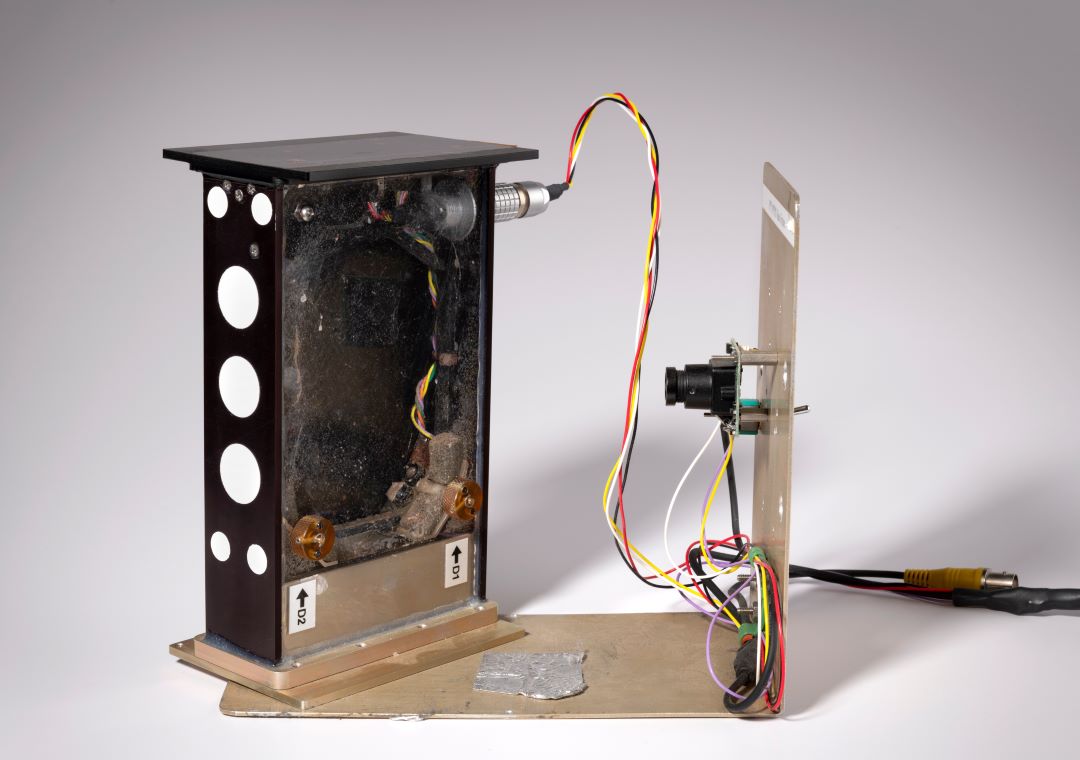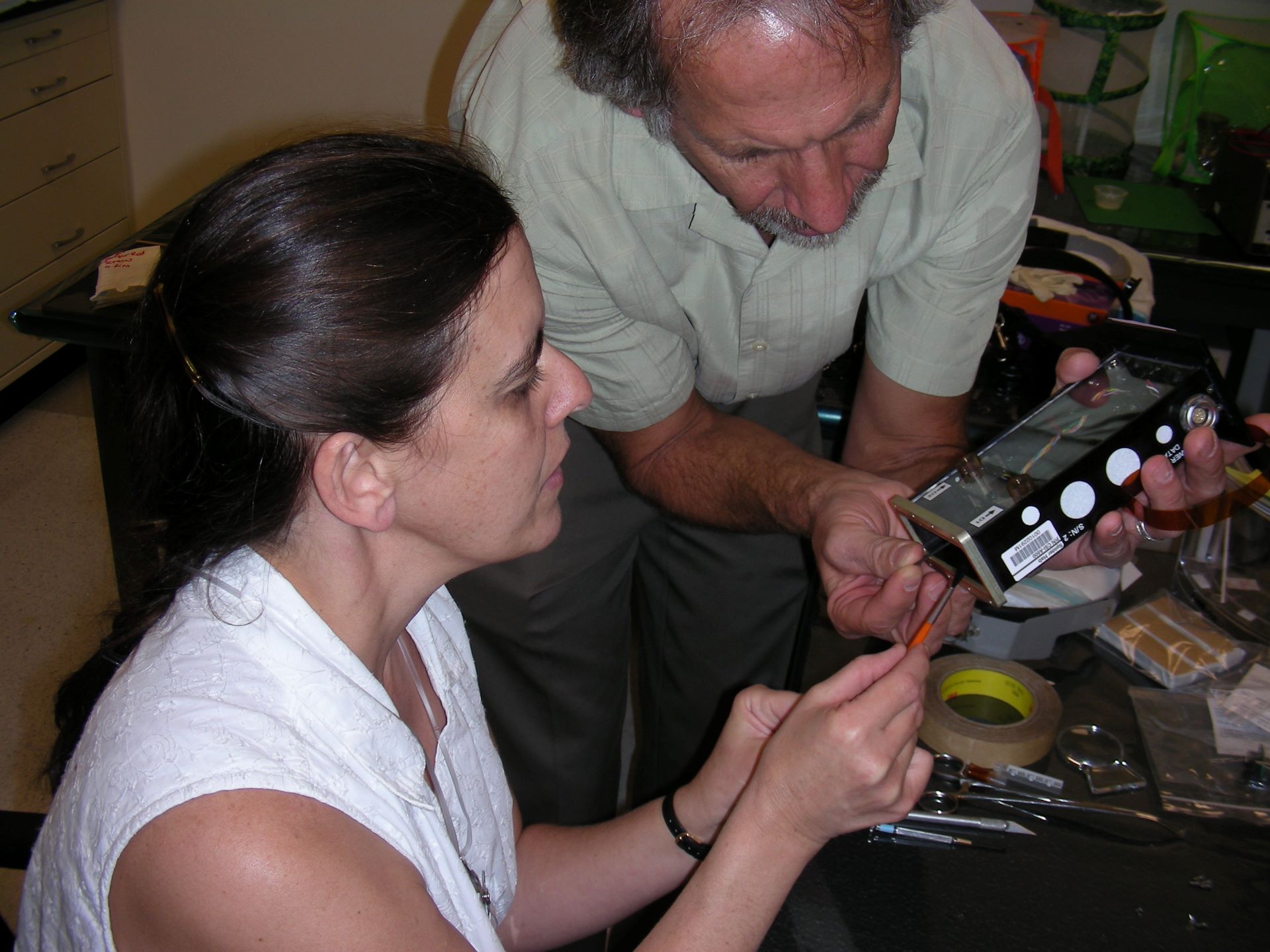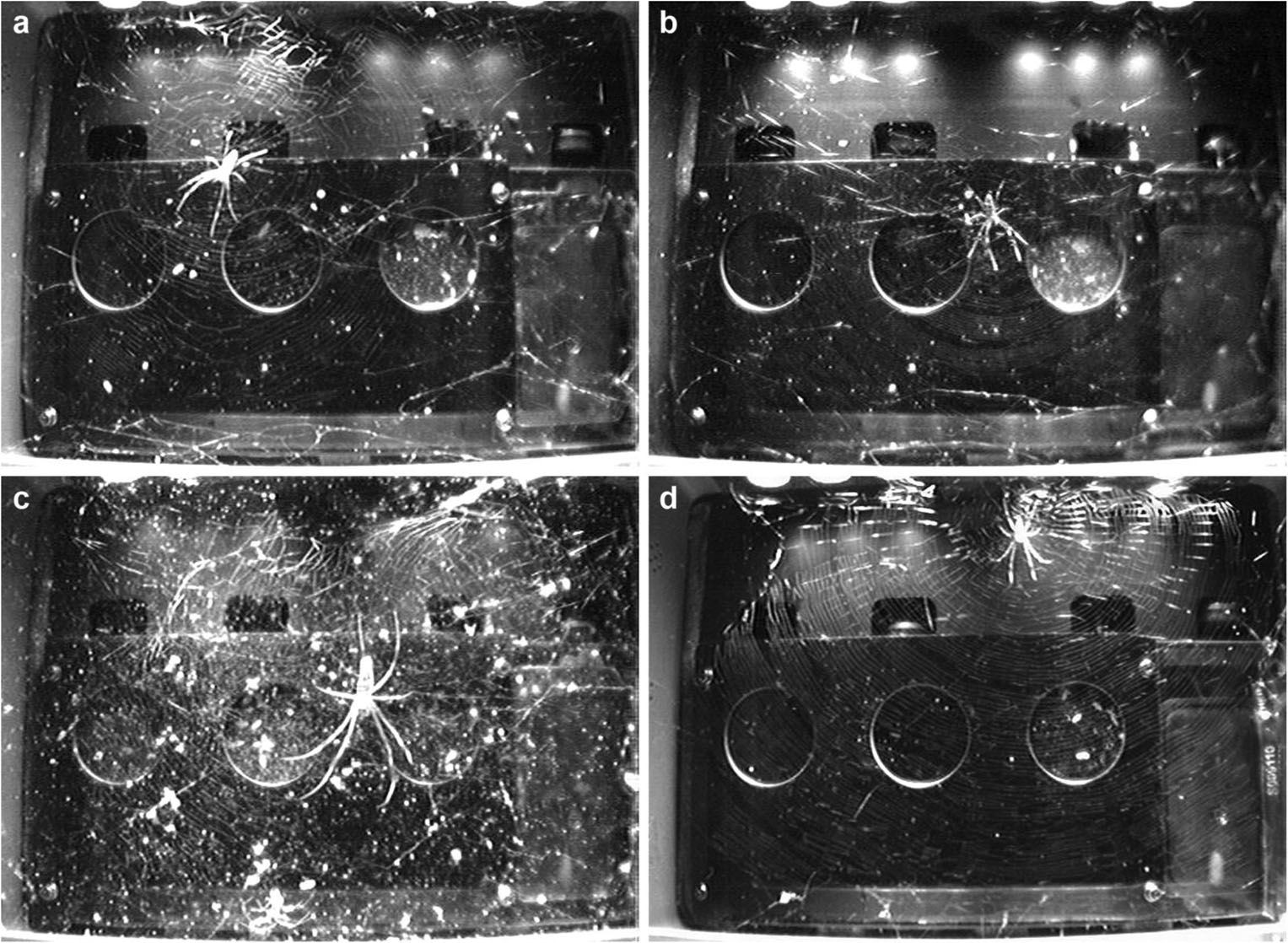Earth-bound Spiders
Humans have taken spiders into space more than once to study the importance of gravity to their web building and prey capture behaviors. Orb weaving spiders in the family Araneidae have been sent to space on several occasions. On earth, orb weaving spiders rely on gravity cues and wind currents to construct their webs and to position themselves in the silken orb. On earth, a spider initiates web construction by releasing a droplet of silk from the abdomen, the droplet is pulled from the spider’s body by air currents and tangles in a nearby object, then the spider utilizes this initial “bridge line” to construct the radial threads and the spiral prey-capture threads of the web. Next time you encounter an orb web, take a close look at the structure and you will find that the hub of the web is off-center with more capture spirals below the hub than above the hub (it is easier for a spider to run down the web to wrap a caught insect than to run up away from the pull of gravity). In addition, you should notice that an orb weaving spider always faces downward – this downward positioning is also based on gravity cues.
Arachnonauts to Skylab
In the 1970s, a high school teacher named Judith Miles proposed sending orb weaving spiders to Skylab, the precursor of the International Space Station. Two Araneus diadematus spiders were sent to Skylab in 1973. The NASA astronauts named their eight-legged arachnonauts Anita and Arabella. A fascinating description of this early experiment can be found on NASA's website. In that early experiment, scientists determined that it took Anita and Arabella about 48 hours to acclimate to their zero-gravity environment but that, after acclimating, they were able to build fully functional orb webs that were more symmetrical than webs built on earth with more delicate strands of silk. Unfortunately, the spiders died of dehydration before too long. Spiders can go a long time without food but not very long without sufficient moisture.
Arachnonauts to the International Space Station
In 2008, I was contacted by Stephanie Countryman of BioServe Space Technologies in Boulder. BioServe wanted to replicate the earlier Skylab experiment and send two more orb weavers to the International Space Station. I had the fun challenge of helping BioServe design a habitat that would provide the arachnonauts with plenty of food in the form of fruit flies as well as a source of water.

Two different orb weaving spiders were sent in one habitat, a juvenile of a Colorado species, Larinioides patagiatus, and an adult female of a wild caught Florida species, Metepeira labyrinthea. I flew to Florida and was on hand to help load the spiders into the habitat at the Kennedy Space Center.

As with the Skylab experiment, it took the spiders about 48 hours to acclimate to the zero-gravity environment during which time they filled the small habitat with random lines of silk. After they acclimated, they learned how to build fully functional orb webs even without air currents or gravity cues. While they were building webs in space, two other spiders of those same two species were building webs in a control habitat on earth. The webs built by the arachnonauts were more symmetrical than the webs built on earth, with the hubs located in the center of the webs, and the spiders oriented any which way in space rather than always facing downward. Unfortunately, the fruit fly population succeeded in reproducing beyond our expectations and soon fruit fly goop blocked our view into the habitat.
Arachnonauts Fly Again and We Discover the Importance of Light
In 2011, BioServe decided to repeat the orb web experiment with a different species and with an improved habitat. In this experiment two juvenile spiders of the orb weaving species Trichonephila clavipes flew to the International Space Station while another two stayed on Earth in an identical habitat.
Three cameras set up in front of the habitats took pictures every five minutes. My colleague, Samuel Zschokke of the University of Basel in Switzerland (who is an expert on spider web construction), Countryman of BioServe Space Technology, and I analyzed the symmetry of 100 spider webs and the orientation of the spider in the web using about 14,500 images. In 2021, we published our findings from both the 2008 and 2011 experiments in the journal Science of Nature. As in the earlier experiments on Skylab and the International Space Station, it took the spiders about 48 hours to acclimate to the zero-gravity environment after which they built fully functional orb webs.

However, in the 2011 experiment, we made an intriguing discovery. We observed that it made a difference whether the spiders began building their webs when lights set in the top of the habitat were on or when the lights were off and the habitat was dark. If the spiders began building their webs during the dark cycle of the experiment, the webs were more symmetrical and the spiders rested in random orientations in the webs. If web construction began when the lights were on, the webs were as asymmetrical as the terrestrial webs and the spiders tended to orient facing down.
“We wouldn't have guessed that light would play a role in orienting the spiders in space,” says Zschokke.
It seems spiders use light as an additional orientation aid when gravity is absent. Since spiders also build their webs in the dark and can catch prey without light, it had previously been assumed that light plays no role in their orientation.
“That spiders have a back-up system for orientation like this seems surprising, since they have never been exposed to an environment without gravity in the course of their evolution,” says Zschokke. On the other hand, he says, a spider's sense of position could become confused while it is building its web. During construction of the web, the spider’s body is in constant motion, so an additional orientation aid based on the direction of the light could be particularly useful.
The Grand WHY?
Why is it important to send such creatures as spiders (and fruit flies) to space? If humans hope to one day establish space stations on other planets or spend extended periods of time in space, we must understand how these conditions affect not just our own bodies, our own physiology, and our own behavior but that of other organisms as well. In order to survive in space, humans can’t be the only species on the spacecraft!
Wait, There’s More!
To learn more about spiders in space and to see them spinning their webs in zero gravity, the “Science News” exhibit on the second floor of the Museum around the corner from Discovery Zone.